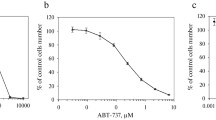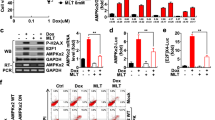Abstract
Anthracycline antibiotics, such as doxorubicin and daunorubicin, constitute a group of wide spectrum therapeutic agents. Application of these drugs in chemotherapy is limited because of their toxic effects. Melatonin, the main secretory product of pineal gland, was recently found as a free radical scavenger and antioxidant.
We decided to evaluate the tissue protective effect of melatonin against toxic effects of doxorubicin in six groups of rats. Rats were given doxorubicin (Dx) (45 mg/kg dose), melatonin (MEL) (10 mg/kg), first doxorubicin and then melatonin (DM), first melatonin and then doxorubicin (MD).
The degree of kidney, lung, liver and brain cells' alterations were examined biochemically.
In doxorubicin-treated group, malondialdehyde (MDA) levels of kidney, lung, liver and brain tissues were significantly increased but glutathione (GSH) levels were decreased compared to control rats. In the group in which first doxorubicin and then melatonin were given, MDA levels were significantly decreased compared to the doxorubicin-treated group.
In doxorubicin-treated group, serum levels of creatinine, uric acid, blood urea nitrogen (BUN), Gamma-glutamyl transpeptidase (GGT) and Lactic acid dehydrogenase (LDH) were significantly increased while serum albumin and total protein levels were significantly decreased compared to control rats.
Melatonin decreased the intensity of the changes produced by the administration of doxorubicin alone. Melatonin was quite efficient in reducing the formation of lipid peroxidation, restoring the tissue GSH contents and alterations of serum levels.
Similar content being viewed by others
References
Agapito MT, Antolin Y, del Brio MT, Lopes-Burillo S, Pablos MI, Recio JM: Protective effect of melatonin against adriamycin toxicity in the rat. J Pineal Res 31: 23–30, 2001
Olson RD, Mushlin PS: Doxorubicin cardiotoxicity: analysis of prevailing hypotheses.The FASEB Journal 4: 3076–3086, 1990
Rajagopalan S, Politi PM, Sinha BK, Myers E: Adriamycin-induced free radical formation in the perfused rat heart: implications for cardiotoxicity. Cancer Res 48(17): 4766–4769, 1988
Singal PK, Siveski-Iliskovic N, Hill M, Thomas TP, Li T: Combination therapy with probucol prevents adriamycin-induced cardiomyopathy. J Mol Cell Cardiol 27: 1055–1063, 1995
Reiter R, Tang L, Garcia JJ, Munoz-Hoyos A: Pharmacological actions of melatonin in oxygen radical pathophysiology. Life Sci 60: 2255–2271, 1997
Neri B, de Leonardis V, Gemelli MT, di Loro F, Mottola A, Ponchietti R, Raugei A, Cini G: Melatonin as biological response modifier in cancer patients. Anticancer Res 18: 1329–1332, 1998
Poeggeler B, Reiter RJ, Tan DX, Chen LD, Manchester LC: Melatonin, hydroxy radical-mediated oxidative damage, and aging: a hypothesis. J Pineal Res 14: 151–168, 1993
Pieri C, Marra M, Moroni F, Recchioni R, Marcheselli F: Melatonin: a peroxyl radical scavenger more effective than vitamin E. Life Sci 55: PL 271–276, 1994
Gilad E, Cuzzocrea S, Zingarelli B, Salzman AL, Szabo C: Melatonin is a scavenger of peroxynitrite. Life Sci 60: PL 169–174, 1997
Li ZR, Reiter RJ, Fujimori O, Oh CS, Duan YP: Cataractogenesis and lipid peroxidation in newborn rats treated with buthionine sulfoximine: preventive actions of melatonin. J Pineal Res 22: 117–123, 1997
Bertuglia S, Marchiafava PL, Colantuoni A: Melatonin prevents ischemia reperfusion injury in hamster cheek pouch microcirculation. Cardiovasc Res 31: 947–952, 1996
Duncker DJ, Verdouw PD: Has melatonin a future as a cardioprotective agent? Cardiovasc. Drugs and Therapy 15: 205–207, 2001
Montilla PL, Tunez IF, Munoz de Agueda C, Gascon FL, Soria JV: Protective role of melatonin and retinol palmitate in oxidative stress and hyperlipidemic nephropathy induced by adriamycin in rats. J Pineal Res 25(2): 86–93, 1998
Montilla P, Tunez I, Munoz MC, Lopez A, Soria JV: Hyperlipidemic nephropathy induced by adriamycin: effect of melatonin administration. Nephron 76(3): 345–350, 1997
Rapozzi V, Comelli M, Mavelli I, Sentjurc M, Schara M, Perissin L, Giraldi T: Melatonin and oxidative damage in mice liver induced by the prooxidant antitumor drug, adriamycin. In vivo 13(1): 45–50, 1999
Baydas G, Ercel E, Canatan H, Dönder E, Akyol A: Effect of melatonin on oxidative status of rat brain, liver and kidney tissues under constant light exposure. Cell Biochem Funct 19: 37–41, 2001
Timlioğlu Ö, Kutsal Ş, Özkur M, Uluoğlu Ö, Arıcıoğlu A, Çevik C, Düzgün E, Sancak B, Poyraz A: The effect of EGb 761 on the doxorubicin cardiomyopathy. Research Communications in Molecular Pathology and Pharmacology 106: 181–192, 1999
Akbulut KG, Gönül B, Akbulut H: Differential effects of pharmacological doses of melatonin on malondialdehyde and glutathione levels in young and old rats.Gerontology 45: 67–71, 1999
Kurtel H, Granger DN, Tso P, Grisham MB: Vulnerability of intestinal interstitial fluid to oxidant stres. Am J Physiol 263: G573–578, 1992
Casini A, Ferrali M, Pompella A, Maellaro E, Comborti M: Lipid reroxidation and cellular damage in extrahepatic tissues of bromobenzene intoxicated mice. Am J Pathol 123: 520–531, 1986
Oz E, Erbas D, Sürücü HS, Düzgün E: Prevention of doxorubicin induced cardiotoxicity by melatonin. Molecular and Cellular Biochemistry, in press
Booser DJ, Hortobagyi GN: Anthracycline antibiotics in cancer therapy. Drugs 47: 223–258, 1994
Grenier MA, Lipshultz SE: Epidemiology of anthracycline cardiotoxicity in children and adults. Semin Oncol 25: 72–85, 1998
Hortobagyi GN: Anthracyclines in the treatment of cancer. Drugs 54: 1–7, 1997
Pieri C, Marra M, Moroni F, Recchioni R, Marcheselli F: Melatonin: a peroxyl radical scavenger more effective than vitamin E. Life Sci 55: PL 271–276, 1994
Hardeland R, Reiter RJ, Poeggeler B, Tan DX: The significance of the metabolism of the neurohormone melatonin: antioxidative protection and formation of bioactive substances. Neurosci Biobehav Rev 17: 347–357, 1993
Meister A: Glutathione deficiency produced by inhibition of it's synthesis and it's reversal: Applications in research and therapy. Pharmacol Ther 51: 155–194, 1991
Tunez I, del Carmen Munoz M, Feijoo M, Valdervira ME, Rafael Munoz-Castaneda J, Montilla P: Melatonin effect on renal oxidative stress under constant light exposure. Cell Biochem Funct 21(1): 35–40, 2003
Tunez L, Munoz MC, Feijoo-Lopez AL, Valdvira E, Bujalance-Arenas L, Montilla P: Effect of melatonin on hyperlipidemic nephropathy under constant light exposure. J Physiol Biochem 58(2): 109–114, 2002
Montilla P, Tunez I, Munoz MC, Soria JV, Lopez A: Antioxidative effect of melatonin in rat brain oxidative stress induced by adriamycin. Rev Esp Fisiol 53(3): 301–305, 1997
Rapozzi V, Zorzet S, Comelli M, Mavelli I, Perissin L, Giraldi T: Melatonin} decreases bone marrow and lymphatic toxicity of adriamycin in mice bearing TLX5 lymphoma. Life Sciences 63(19): 1701–1713, 1998
Granzotti M, Rapozzi V, Decorti G, Giraldi T: Effects of melatonin on doxorubicin cytotoxicity in sensitive and pleiotropically resistant tumor cells. J Pineal Res 31: 206–213, 2001
Dziegiel P, Suder E, Surowiak P, Jethon Z, Rabczynski J, Januszewska L, Sopel M, Zabel M: Role of exogenous melatonin in reducing the nephrotoxic effect of daunorubicin and doxorubicin in the rat. J Pineal Res 33: 95–100, 2002
Author information
Authors and Affiliations
Corresponding author
Rights and permissions
About this article
Cite this article
Öz, E., İlhan, M.N. Effects of melatonin in reducing the toxic effects of doxorubicin. Mol Cell Biochem 286, 11–15 (2006). https://doi.org/10.1007/s11010-005-9003-8
Received:
Accepted:
Published:
Issue Date:
DOI: https://doi.org/10.1007/s11010-005-9003-8




